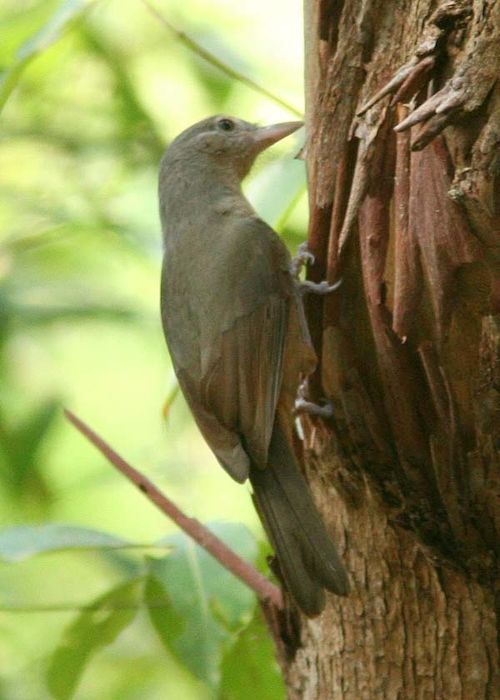The Batanta Island Shrike-thrush: A Unique Avian Gem
Share
The Batanta Island Shrike-thrush, scientifically known as Colluricincla megarhyncha batantae, is a fascinating bird species belonging to the family Muscicapidae. This subspecies is endemic to Batanta Island, part of Indonesia's Raja Ampat archipelago. With its distinct characteristics and ecological significance, the Batanta Island Shrike-thrush is a remarkable example of the biodiversity found in this region.

Taxonomy and Classification
The Batanta Island Shrike-thrush is classified under the following taxonomic hierarchy:
- Order: Passeriformes
- Family: Muscicapidae
- Suborder: Oscines
- Subfamily: Pachycephalinae
- Species: Colluricincla megarhyncha
- Subspecies: batantae
- Type: Pinarolestes megarhynchus batantae Meise, 1929
This classification highlights the bird's close relationship with other members of the Muscicapidae family, which includes various species of thrushes and flycatchers.
Physical Characteristics
The Batanta Island Shrike-thrush is a medium-sized bird, typically measuring around 20-25 cm in length. It exhibits a robust body with a slightly curved bill, adapted for its insectivorous diet. The plumage is predominantly brown with lighter underparts, providing excellent camouflage among the forest foliage.

Habitat
The Batanta Island Shrike-thrush inhabits the lush tropical forests of Batanta Island. These forests are characterized by dense vegetation, which provides ample cover and nesting sites. The bird prefers lowland rainforests, often found near streams and rivers, where it can forage for food.
Diet
As an insectivore, the Batanta Island Shrike-thrush primarily feeds on insects, including beetles, ants, and caterpillars. It forages by hopping along the forest floor or gleaning insects from leaves and branches. This feeding behavior plays a crucial role in controlling insect populations within its habitat.

Behavior
The Batanta Island Shrike-thrush is known for its melodious song, which it uses to communicate with potential mates and establish territory. The bird is generally solitary or found in pairs, often seen foraging actively in the underbrush. Its shy nature makes it a challenge to observe, but those who are patient may be rewarded with glimpses of this elusive species.

Reproduction
Breeding season for the Batanta Island Shrike-thrush typically occurs during the wet season, when food is abundant. The female builds a cup-shaped nest using twigs, leaves, and moss, usually located in dense vegetation. After laying a clutch of 2-4 eggs, both parents share the responsibility of incubating the eggs and feeding the chicks once they hatch.

Conservation Status
The Batanta Island Shrike-thrush is currently classified as a species of least concern by the IUCN Red List. However, habitat loss due to deforestation and human encroachment poses a potential threat to its population. Conservation efforts aimed at preserving the unique ecosystems of Batanta Island are essential to ensure the survival of this and other endemic species.
Birdwatching Tips
For birdwatchers eager to observe the Batanta Island Shrike-thrush, visiting Batanta Island during the breeding season is ideal. Early morning or late afternoon are the best times to spot these birds as they are most active during these hours. Staying quiet and patient while exploring the forest can increase the chances of encountering this beautiful species.
The Batanta Island Shrike-thrush is not just a bird; it is a vital part of its ecosystem, contributing to the balance of nature in its habitat. Observing this unique avian species offers a glimpse into the rich biodiversity of Batanta Island and highlights the importance of conservation efforts in protecting such remarkable wildlife.